Bombala working dog could be nation’s best
■ Renee and Bat ready to win 2023 Cobber Challenge
By NATHAN THOMPSON
BOMBALA’s Renee Hayter believes her much-loved kelpie, Bat, could be Australia’s hardest working dog.

With an appetite for farm work and obedient nature, Bat could soon be crowned the best working dog in Australia and New Zealand.
Renee and Bat have become an inseparable pair in the six months they have been working together at a Bendoc Hereford stud, and now, the dynamic duo is ready to win the Cobber Challenge.

Renee said her best mate has a good chance of winning the Cobber Challenge with the competition the perfect setting to show what a dedicated dog Bat is.
“I’m pretty excited we were selected to take part in the challenge. Bat has a strong chance of taking it out, he just

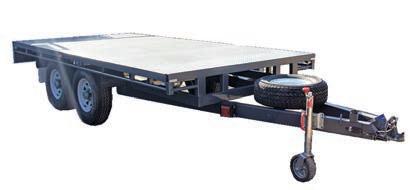




loves to work,” Renee said.
“Bat loves to run and he covers a lot of miles each day. He’s a great dog, he does everything you ask of him.“
The 2023 Cobber Challenge recognises the unsung heroes who keep Australia and New Zealand’s multi-billion dollar agricultural sector moving.


Twelve working dogs across both nations are currently battling it out for the Cobber Challenge title.
Now in its eighth year, the current instalment of the challenge is expected to be the best yet with a new format set to produce record-breaking scores for each contestant.
Renee is confident the altered format will give Bat a better chance of winning.
“This time the challenge is run over 12 weeks. The dogs are measured for how fast they run and how much distance they cover,” Renee said.
HARD WORKER: Renee and Bat form a formidable duo.
The 12 canine competitors will wear a GPS tracker to record their distance, speed and duration each work day, with points accumulated based on performance. For the first time in the Challenge’s history, the data will be collected over three
months, with the three busiest weeks on farm counting towards each dog’s final score. Renee has worked at the Bendoc stud for seven months. The committed farm hand loves working on the property that boasts 3000 head of sheep and 300 cattle.
Quality offerings for Monaro spring bull sales
AS spring approaches on the Monaro, the region’s studs are gearing up for their bull sales. The first of the sales commence on Friday August 18 with the Bendoc Park Poll Hereford sale. Held at the Delegate Showground, the sale will again see the team of Eddie, Gail and Lucy Sellers present a strong offering.
Rosskin Angus Stud will
hold their on-property bull sale on Monday September 4 from 12pm. The Walters family of Rosskin will offer 30 Angus bulls for sale.


Last year’s sale saw the top priced bull sold for $26,000 with Rod Warren of Kelton Plain joint highest buyer.
On Tuesday September 5 at 12pm, Kunuma Angus Stud will hold its on-property
spring bull sale. The stud, run by the Lynch family, will look to follow their strong 2022 sale where their 49 bulls offered all sold. Dean Lynch said the stud was pleased with last year’s spring bull sale.
“It was a really good sale. We cleared 100 percent and it was good to see so many people come out and support us.”
Hazeldean will offer 141 bulls at its spring sale on Thursday September 7 from 1pm.
Jim Litchfield of Hazeldean said this year’s offering will present bulls not only impressive on paper but ones that will deliver tangible benefits to a commercial operation.

Part of the Farmer Group of Rural Newspapers – Incorporating Your Farm SNOWY MONARO Wednesday August 2, 2023 www.monaropost.com.au Royal Hill, Cooma NSW 2630 For a quote, contact 6452 1934 info@coomasteel.com.au www.coomasteel.com.au Follow us on Facebook The Trailer you ALWAYS wanted, now at Cooma Steel Metaland 10, 814nc gst $7,689 inc gst Type: Heavy Duty 3.5t Dual axle Tipper Finish: 2 pack painted Size: 12x6 Brakes/no brakes: Electric brakes Fixed /tipping: Tipping Type: Heavy Duty 2.8t Dual axle Plant trailer Finish: 2 pack painted Size: 10x6 Brakes/no brakes: Electric brakes Fixed /tipping: Fixed Type: Heavy Duty 3.5t Dual axle Flat Top trailer Finish: 2 pack painted Size: 14x7 Brakes/no brakes: Electric brakes Fixed /tipping: Fixed National honours for Bendoc Park MFS trials continue Neutralising soil acidity PAGE 5 PAGE 8 PAGE 4
Upper Snowy Landcare Network tackling dieback
 By LISA ASHURST
By LISA ASHURST
FUNDING is one thing, but it’s the ongoing work and commitment of groups like the Upper Snowy Landcare Network (USLN) that is vital in ensuring the conservation and continued care of our local landscapes, especially where rehabilitation is needed.
The USLN has been particularly concerned over tree dieback on the Monaro; the main species affected being the majestic species known as the Ribbon, or Manna Gum (Eucalyptus Viminalis) which has perished.
Federal and state government grants were made available to the Network, which allowed the group to focus on the problem.
Since 2016, they have planted 50 plots with approximately 50,000 seedlings scattered throughout the dieback zone (an area the size of the ACT) as one way of reinstalling lost biodiversity.
Other grants have allowed the USLN to direct their energies toward several important projects, such as the Gedegzerick Travelling Stock Reserve rehabilitation project.
Funded by the NSW
Environmental Trust, the grant enabled the installation of wildlife-friendly fencing, extensive planting using different soil treatments, direct seeding, cultural burning and gully erosion control, all of which were shared at an open day held in March this year.
The Network has also done a lot of on-site weed control and run various Biodiversity Conservation Trust events. They have facilitated some deep science efforts
such as climate testing, with the ANU, the next generation of trees (1400 seedlings) grown in temperature-controlled houses and planted at Gedegzerick, which is in the heart of the dieback area.
As well as the Gedegzerick TSR project, the USLN has rolled out an extensive NSW Government Bushfire Landcare grant. This has allowed the Network to plant more than 8,000 seedlings across eight private properties inside a protected
area of around one 100 hectares.
Another grant in 2022 covered further fencing, and the protection of more than 120 hectares of habitat.
In a move to assist landholders in establishing habitat plots, the USLN has worked with the Foundation for National Parks and Wildlife to distribute 12,000 free seedlings over the last two years.
The Network said it is
very grateful to Bernie and Michelle McDonald, and all the volunteers who worked tirelessly on this project and also Planting Systems Australia, who contributed to the effort with guards and additives.
Over the last year, the USLN has worked with the NSW Government Koala Strategy to enhance the landscape and gain more knowledge of our Snowy Monaro koalas, which inhabit pockets near
Numeralla and the Snowy River, as well as other areas.
Song meter recorders being deployed to locate the males, as well as on-ground support, is ongoing in an effort to expand their territory.
USLN is asking members of the public to report any koala sightings via the I SPY KOALA app and/or to call their local wildlife expert if they see an animal which appears to be unwell or too near a road.
On top of other projects in the works, are plans for the Berridale region, which includes some plantings at O’Brien Park and Myack Creek, and a focus on highlighting the almost unknown Monaro Golden Daisy.
USLN said the Land for Wildlife property assessments can now be accessed via the two Landcare Networks in the Snowy region. Landowners who would like to participate should contact Lauren (in the South - Upper Snowy Landcare Network) at contact@uppersnowylandcare.org.au or Georgeanna (in the North - Upper Murrumbidgee Landcare) at upper,murrumbidgee@ gmail.com
Innovation in magnesium supplementation supports cattle grazing winter pastures
LEADERS in ruminant nutrition innovation, Wagga Wagga based AusFarm Nutrition Products (ANP), has been working with cattle and sheep producers for almost two decades to boost the productivity and profitability of extensive grazing systems.
Recently, the ANP technical innovation team has focussed on increasing the performance of cattle grazing winter pastures. Specifically, attention has been on the role of effective magnesium supplementation in increasing production and lowering losses due to grass tetany in high performing cattle.
Grass tetany (hypomagnesaemia) is a condition associated with low blood magnesium levels and is common in pregnant and lactating cows during the cooler months in southern Australia. It is also one of the leading causes of mortality in adult cows in south-eastern Australia and is estimated to cost $13.7 million in lost production annually.1
With a rich history in introducing livestock production innovation to the Australian market, ANP’s Chief Nutritionist and Managing Director, Dr Paul Meggison is extremely excited about the launch of ANP’s most
recent product, StockMins-BoviMag Magnesium Supplement for Cattle.
“It’s always exciting to launch new products and support Australian farmers to produce the best meat, fibre and milk in the world. StockMins-BoviMag is another tool in the toolbox that can help cattle achieve peak performance and maximise on-farm profitability,” Dr Meggison said.
According to Dr Meggison, magnesium is important for many functions within ruminant animals and has a major role in nerve function and energy metabolism.
“Magnesium is not highly mobilised in the body and can become deficient quickly if forages don’t provide magnesium effectively. This is common in low magnesium grazing crops and lush green pastures during winter,” he said.
Dr Meggison believes that with grass tetany we only see the tip of the iceberg and that effective magnesium supplementation has a more widespread role in animal productivity and wellbeing.
“Effective magnesium supplementation has also been
linked to a reduction in calving stress, post-weaning stress and significant growth promotion in ruminants grazing magnesium deficient pastures.”

StockMins-BoviMag is a weatherproof, granular, loose lick supplement designed to boost essential mineral, vitamin and trace element status in cattle at times when minerals, especially magnesium, calcium and sodium, are less available and in high demand.
StockMins-BoviMag provides cattle with multiple sources of magnesium to maximise absorption and rapidly elevate the magnesium status of supplemented livestock.
Don’t wait until it’s too late, talk to the team at South East Rural Supplies today on (02) 6452 3511 and turn your winter grazing risk into production reward with StockMins-BoviMag Magnesium Supplement for Cattle.
Wednesday August 2, 2023 Snowy Monaro Farmer - Page 2
1. Priority list of endemic diseases for the red meat industry - 2022 update. Meat and Livestock Australia, 2022. StockMins-BoviMag is a product of AusFarm Nutrition Products.
REHABILITATION EFFORTS: The Upper Snowy Landcare is committed to limiting dieback on the Monaro.
AusFarm Nutrition Products
StockMins BoviMag
Magnesium Supplement for Cattle
Reduce the risk of grass tetany
Boost production on green feed
StockMins-BoviMag is a weatherproof, granular loose lick supplement designed to boost essential mineral, vitamin and trace element levels in cattle.
Weatherproof,
safe & easy to use
StockMins-BoviMag provides cattle with multiple sources of magnesium for maximum absorption.


percentage

Higher weaning weights
maximise your weaning percentage this season lambing supplement to get the most out of your ewes.
and trace element significantly elevated during pregnancy to early post-lambing). These for ewes carrying
during this period demands to sustain a foetus and support milk
StockMins-EweLamLac is a weatherproof granular loose lick supplement designed to support ewes under pre and post-partum stress. It focuses on increasing dietary levels of magnesium, calcium and phosphorousto satisfy the demands of a growing foetus.
StockMins-EweLamLac also boosts feed conversion efficiency and immune function, ultimately supporting ewes and lambs when they are most vulnerable to disease.
of your ewes this lambing season call the team at South East Rural 3511.
For more information on how to boost production on green feed and reduce the risk of grass tetany this season call the team at South East Rural Supplies (02) 6452 3511

Snowy Monaro Farmer - Page 3 Wednesday August 2, 2023
ausfarmnutrition.com
Greater performing ewes -EweLamLac Supplement ausfarmnutrition.com
Liming: a best practice to neutralise soil acidity
By PRADEEP KUMAR, graduate agronomist, AgriWest Rural Cooma

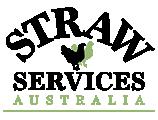
MOST of the land in the Monaro region is dominated by acidic soil.
According to a report, the estimated cost of soil acidity in agricultural production is $1,585 million per year, which is noticeable in the high and moderate rainfall regions of NSW, Victoria, and WA.
Technically, any soil with a pH below seven can be considered acidic soil, although many plant species that are tolerant to acidity can perform very well in these conditions.
Soil acidification is a result of hydrogen ion accumulation in the soil through the build-up of parent rock material or organic matter.
Another common cause of lower soil pH is when the paddock has excess nitrogen in the soil.
For example, if a crop/ pasture cannot utilise
all the nitrogen applied through nitrogen or ammonia fertilisers, or the soil has abundant organic matter available; it produces a lot of its own nitrogen so that nitrogen is also in excess. This can happen even in a year when we don’t grow any crops. Now the question is, if there is zero crop/pasture in the paddock, and the soil is producing a lot of nitrogen, where does that nitrogen go?
When we have rainfall and mainly excess rainfall, a lot of that nitrogen converts over to nitrate. Then most of that nitrate converts to nitric acid and it strips out calcium out of the soil.
As a result, soil pH starts getting down gradually and when it goes below 5.0 (CaCl2), the productivity of even tolerant crops and pastures starts to drop. That can also lead to aluminium toxicity and a significant decline in soil microbial activity.
At the same time, most essential soil cations such as phosphorus, calcium, magnesium, and molybdenum become less available to the plants.
To get better crop and pasture production effective management of acidic soils is very important that can be achieved by adopting the combination of three management practices mentioned below.
1. Minimise acidification – by applying less acidifying fertiliser and managing nitrate movement in the soil
2. Application of agricultural lime to increase soil pH

3. Grow acid-tolerant crops and pasture varieties
Initially, to identify this issue we need a soil test in which we look at two important aspects: first soil pH and second, exchangeable cation percentage, specifically hydrogen.
The only reason we look at this is because
hydrogen and calcium correlate together. Consequently, the higher the hydrogen number, the lower the pH would be.
The solution to that is to add more calcium (CaCo3) to the soil through a lime application.

Other sources like dolomite and alkali material will also help neutralise soil acidity. So, the calcium carbonate combines with the excess hydrogen in the soil to produce water, carbon dioxide and free calcium.
Lastly, using acidtolerant species can be another solution to overcome this problem. Species such as subterranean and arrowleaf clover, ryegrass, tall fescue, serradella, chicory etc. are tolerant to aluminium toxicity.
Although growing tolerant species can be a useful stopgap, it does not rectify an acid soil problem, which may get worse over time.
We cater to all types of animal industries including:
• Small animal breeders, such as rabbits and cavies
• Stable bedding for the family pony or champion thoroughbred
• Dairy calves
• All forms of barn-raised poultry
Our product is of the highest quality and meets all HACCP standards for use in the poultry and animal industry. Our product is clean and free of contaminates such as CCA, glues and resins.
For enquiries or quotes contact
Anthony: 0428 484 153 | Tim: 0401 720 418

Wednesday August 2, 2023 Snowy Monaro Farmer - Page 4 Spring Bull Sale Thursday 7th September 2023 141 Bulls Office (02) 6453 5555 Bea Litchfield 0427 933 103 | Ed Bradley 0412 298 546 Jim Litchfield 0417 676 561 | admin@hazeldean.com.au
www.hazeldean.com.au
SOIL TESTING: Agronomist Pradeep Kumar says liming can reduce soil acidity.
National honours for Bendoc Park
■ Sellers family success at Hereford Youth Expo
By SAM TONKS
BENDOC Park Poll Herefords attended the National Hereford Youth Expo held at Parkes Showground from July 6 to 9.

Bendoc Park is run by the Sellers family, headed by Eddie and Gail Sellers, with three of Eddie and Gail’s grandchildren keen to have the opportunity to attend such a fun and educational event.
Eddie Steele, Lottie Telford and Albert Telford headed off to Parkes with three young bulls from Bendoc Park Poll Hereford stud, with these bulls only having a very short 68-day preparation for the Youth Expo.
“In the 68 days the bulls gained 120kg each which is a testament to the performance these cattle will achieve given the opportunity,” Bendoc Park’s Lucy Sellers said.
“Bendoc Park has been striving to source performance genetics while maintaining structural soundness
and temperament. The temperament of these bulls made the job of getting them trained to be lead, washed, clipped and most importantly handled by kids a breeze.”
The three young bulls behaved impeccably for their junior handlers, two of which had never shown cattle before. Bendoc Park is family owned and run, so the job of training and feeding the bulls went to aunty Lucy and uncle Steve.
The Youth Expo was very successful for team Bendoc Park, with Lottie placing third in her paraders class, while Eddie placed with his bull in the show classes.
Albert placed in his junior judging, but most importantly, walked away from the Herefords Australia National Youth Expo with a foundation heifer for his new herd.
Albert was the recipient of the Herefords Australia Most Potential Breeder Award, and received a registered heifer, Kidman Vanity T181, donated by
Kidman Poll Herefords of Dubbo.
She was awarded to Albert as the Most Potential Breeder, which is an outstanding achievement for a 14 year old who was up against competitors up to 25 years of age.
“The Herefords Australia Youth Expo was a tremendous event. A massive congratulations must go to the organizing committee for the outstanding effort that has gone into this event,” Lucy said.
“Not only did it showcase the Hereford breed, but the opportunity for learning, personal development, making new friends and most of all having fun that it offered the kids was second to none.
“To see participants from six to 25 years-of-age outside, having fun and learning about the beef industry, whilst taking on the responsibility of caring for an animal for the duration of the expo was very impressive and leaves the spectator with a sense
SUPER QUIET GENERATORS

of confidence that the beef industry will be in good hands in the future as the majority of the 140 strong participants were very keen to continue in the industry.

“As Eddie and Gail have seven grandchildren, I’m
sure there will be more cattle attending next year’s Youth Expo from Bendoc Park Poll Hereford stud.”
The three young bulls from the expo will be on display at the Bendoc Park Poll Hereford annual bull
sale held at the Delegate Showground on August 18. Many of bulls in this year’s sale are top five percent of the entire poll Hereford breed in Australia for various performance traits.
There’s nothing quite like a Honda Generator with its unique Inverter technology. This guarantees smooth, uninterrupted electricity wherever you may be, so you’re safe to plug in your laptop, or any other sensitive electronic equipment. Due to their quiet nature you can use these generators anywhere.

Ideal for caravanning and camping, or out on the job site, they are able to provide clean, reliable electricity in the most extreme locations. We’ve built them out of light materials such as magnesium, so they’re easy to transport meaning you don’t need to waste your own energy carrying them.

Snowy Monaro Farmer - Page 5 Wednesday August 2, 2023 IN STORE NOW Cooma Power Equipment 69 Commissioner St, Cooma P: 6452 2622 | E: coomapower@gmail.com
SUCCESS: Bendoc Park Poll Herefords took part in the recent Hereford Youth Expo in Parkes, with three young bulls being put on show, including this one expertly paraded by Albert Telford, who won the Most Potential Breeder Award.
Bombala’s Annie loves life on the land
STRENGTH, perseverance, and optimism feature strongly in the stories from the 2023 ABC Heywire winners, and Bombala’s own Annie Green is amongst them.

Hundreds of Australians aged 16 to 22 from regional, rural and remote areas entered the Heywire competition by speaking openly and candidly about life beyond our major cities, through written stories, photos, videos or audio recordings.
Bombala High School Year student, Annie Green’s story is about working in the shearing sheds of the local area.
While her win was announced late last year, the ABC released the video of her story just recently, and congratulations have flowed in on social media.
The video opens with scenes of Bombala before showing Annie in the thick of working in the shearing shed, as well as learning in the Bombala High School classroom.
Many other locals can be spotted in the footage, particularly Bob Kimber and those in his shearing crew at the time, and Annie hopes her journey inspires more young
women to step into the sheds.
Heywire winners share individual stories specific to their lived experience of the place they call home, and this is Annie’s:
Heywire winner Annie — Bombala, NSW, Ngarigo Country
“Our sheds are always full of noise. There’s never a dull moment.
I’ve lived my whole life in




Bombala. We rely heavily on the wool industry. I don’t knit or crochet, I wouldn’t know how.
I play my part by working as a rouseabout for a local shearing contractor. I work a lot for Bob’s crew, he’s been a contractor for 40 years. He’s a great boss.
I keep the board clean for the shearers and sort wool.
My job involves throwing
and skirting fleeces for the wool classer. That means when the wool is on the table, I make my way around the fleece and take off the edges if it’s ratty.
Then the wool classer decides where the wool needs to go based on its colour, or length. It all gets baled up and sold and used for different things.
Some of the fleeces are pretty heavy, I reckon I’ve

become stronger doing this job.
Work in the sheds is hard and the pace is fast, but I really enjoy the challenge.
The classroom feels like a different world from the sheds.
Sometimes I have to say no to work, so I can catch up on a few things at school. It can be hard to balance.
There are about 13 kids
left in my year 11 class. People started working — in the wool industry, in fencing, spraying, or tree planting.
I feel like the real Annie is the one who works in the sheds.
I feel confident at work because I know exactly what I need to do and my whole team is working hard around me, all working together.
I like being a rouseabout, I enjoy it and it’s good money. After school, I’d like to work towards a career in the wool industry and could see myself taking on a certificate in wool classing.

I hope more young women feel confident to give working in the sheds a shot.
I’m happy being a rouseabout. I can move around, see different places, work with different people as they come and go, and spend time outside in the place I love.”
You can read the fresh perspectives of young people from right across regional, rural and remote Australia here at www.abc.net.au/heywire/ winners/ or view Annie’s video on any of the ABC online platforms.
Wednesday August 2, 2023 Snowy Monaro Farmer - Page 6 ANNUAL ON-PROPERTY BULL SALE 4 SEPTEMBER 2023 - 12pm OPEN DAY 1 SEPTEMBER 2023 10am to 3pm Adam Walters M: 0408 405 766 Martin Walters P: (02) 6456 6710 E: bcp@rosskin.com.au 2432 Jimenbuen Road Dalgety NSW 2628 MLP Will Dixon M: 0427 025 809 www.rosskin.com.au Nutrien Gary Evans M: 0400 356 484
ACHIEVER: Bombala High School student, Annie Green was among the winners of the 2023 ABC Heywire competition, with her story about working as a rouseabout in the area hitting social media recently.
Cattle and sheep slaughter remain elevated
ELEVATED year-on-year slaughter has been occurring most weeks across cattle, sheep and lambs this year. Increased supply on the market and cheaper livestock prices have led to processors filling contracts weeks in advance.
During winter, yardings generally tighten. Most processors take this time to complete their shutdown and maintenance periods, hence the significant decrease in slaughter numbers every winter.

These planned shutdown periods are now coming to an end, with most processors back online. As a result, there was a lift in slaughter numbers this week (according to NLRS data released on Wednesday July 26).
Cattle slaughter
Cattle slaughter strengthened 2.4% week-on-week, 20% higher than the same week last year. Queensland plants have been able to maintain fairly stable slaughter over the last month, supporting the easing in numbers in southern states.
NSW dipped to 28,607 head last week and has now increased by 11% week-onweek. National numbers are up by 28% or 685,175 head year-to-date, indicating the current supply on the market.
National female slaughter reached 48.5% this week, with some states (NSW, Victora and WA) recording very high female percentages. Low female slaughter in Queensland is bringing the national average down. Victorian female slaughter is usually much higher than in other states, as most of the dairy herd is in Victoria.
Buyers
keen to secure numbers: Wagga Wagga sheep sale
Sheep slaughter
Sheep slaughter increased 120% weekon-week after dipping below 2022 levels. This follows shutdown periods as well as seasonal lows during joining season. Sheep yardings are beginning to increase again as weaning is completed and producers cull older ewes retained during the rebuild.
Sheep slaughter has remained elevated this year, with total yearly slaughter 63% or 1,636,779 head higher year-to-date. Last year, producers were still retaining ewes for breeding due to favourable seasonal conditions and strong restocking remand. This week, NSW sheep slaughter increased by 148% week-on-week and Tasmania increased by 121%.
Processors’ prioritisation of kill floor space between lambs and sheep continues to play out, with an easing in lamb kill numbers recorded this week. NSW lamb slaughter eased by 5% or 5,429 head. Tasmanian lamb slaughter had the largest percentage change week-on-week, softening by 21%.
In the market
In the sheep and lamb saleyards, the return of key supermarket, processor and export buyers has been helping demand in a market with increasing yardings. For cattle, there was some activity from southern buyers in northern saleyards, which is typical for this time of year and supports prices in these areas.
Good winter conditions in the south should result in good lamb and calf drops this season. These new-season young lambs should start moving through the market in the coming months.
Current Yarding
Total Yarding: 55250 (-5750) | Sheep Yarding: 11550 (-3450) | Lamb Yarding: 43700 (-2300)
By LEANN DAX, MLA market reporter
THE sale had a big percentage of lambs in the offering pushed off crop regardless of finish. The tempo of the market was $10 to $30 cheaper.
The new price level meant all buyers were keen to secure numbers. A major supermarket did not operate, while another key export processors watched the sale.

Woolly lambs and off types were discounted. Light lamb values were hit hard, with no depth in the restocking ranks and lack lustre demand from processors.
Trade competition was infrequent and prices fluctuated around quality, with recently shorn lambs paid the premium prices.


There were a few pens of new season trade lambs and they sold from $108 to $146/head. Old trade lambs 21kg to 26kg sold from $86 to $117 to average 459c/kg cwt.
Light weight lambs to the processors ranged from $12 to $76/head. Merino lambs sold from $86 to $95/head.
In the heavy export market weight and shorter skinned lambs attracted the strongest bidding. The lower values for heavy exports saw extra buyers enter the fray and all sales
met solid demand.

The bulk of the heavy export lambs sold up to $15 to $22 cheaper. Lambs 26kg to 30kg sold at $115 to $155/ head.
Over the 30kg made from $150 to $179/head to average 460c/kg cwt. It was a small group buyers at the rail.
There was little competition amongst the group, with buyers happy to take a back seat throughout the sale. Heavy Merino ewes and wethers sold from $69 to $115 to average 318c/ kg cwt.
Heavy crossbred ewes made from $75 to $112/ head. Trade sheep with cover averaged 213c to 240c/kg cwt.
Heavy hoggets reach $88/head at Yass sale

Current Yarding
Total Yarding: 11608 (-1177) | Sheep Yarding: 4600 (-1000) | Lamb Yarding: 7008 (-177)


LAMB numbers were similar with the quality plain. Most lambs were lacking condition and weight and were in two score condition. Trade lambs were well supplied. There were only
a few heavy and extra heavy weights offered. Restocking interest was very quiet.
The market fell around $15 to $20/head on the better end of the trade lambs, secondary lambs
were back $30 to $35/head. The two score processing lambs to 18kg cwt sold from $25 to $70/head. The trade weights 20 to 22kg$67 to $97 and the 22 to 24kg lambs $71 to $114/head averaging 445c/kg.
Snowy Monaro Farmer - Page 7 Wednesday August 2, 2023 45 BULLS 40 YEARS 2023 SPRING SALE TUESDAY 5TH SEPTEMBER 2023 - 12PM OPEN DAY FRIDAY 1ST SEPTEMBER - 10AM-3PM 'KUNUMA' 2833 SNOWY MOUNTAINS HWY, COOMA NSW 2630 BRED TOUGH Visit www.kunuma.com to find online catalogue ENQUIRIES DEAN LYNCH - 0419 295 954 MITCH LYNCH - 0487 648 227 SIRES: RENNYLEA N542, RENNYLEA Q538, TEXAS POWERPLAY P613, TE MANIA Q1070. SALE INTERFACED WITH 2023 Clip Tags SERVICE · INFORMATION · MARKETING Maxine Blyton 0418 484 733 maxine@jemalongwool.com.au Cooma 6452 3130 | www.jemalongwool.com.au Stuart Bennett 0418 634 316 stuart@jemalongwool.com.au
MFS Resilient Pastures Trial continues
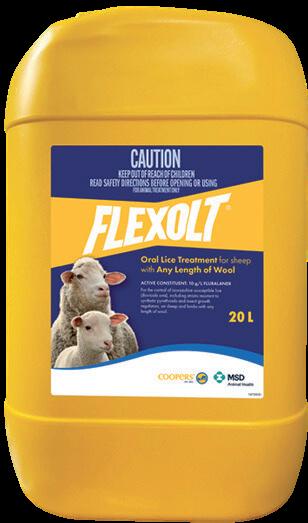
LATE in 2022, Monaro Farming Systems entered a partnership with Holbrook Landcare Ltd to assist the delivery of a project titled ‘Creating landscape-scale change through drought resilient pasture systems’.

The Resilient Pastures project is funded by the Australian Government’s Future Drought Fund.
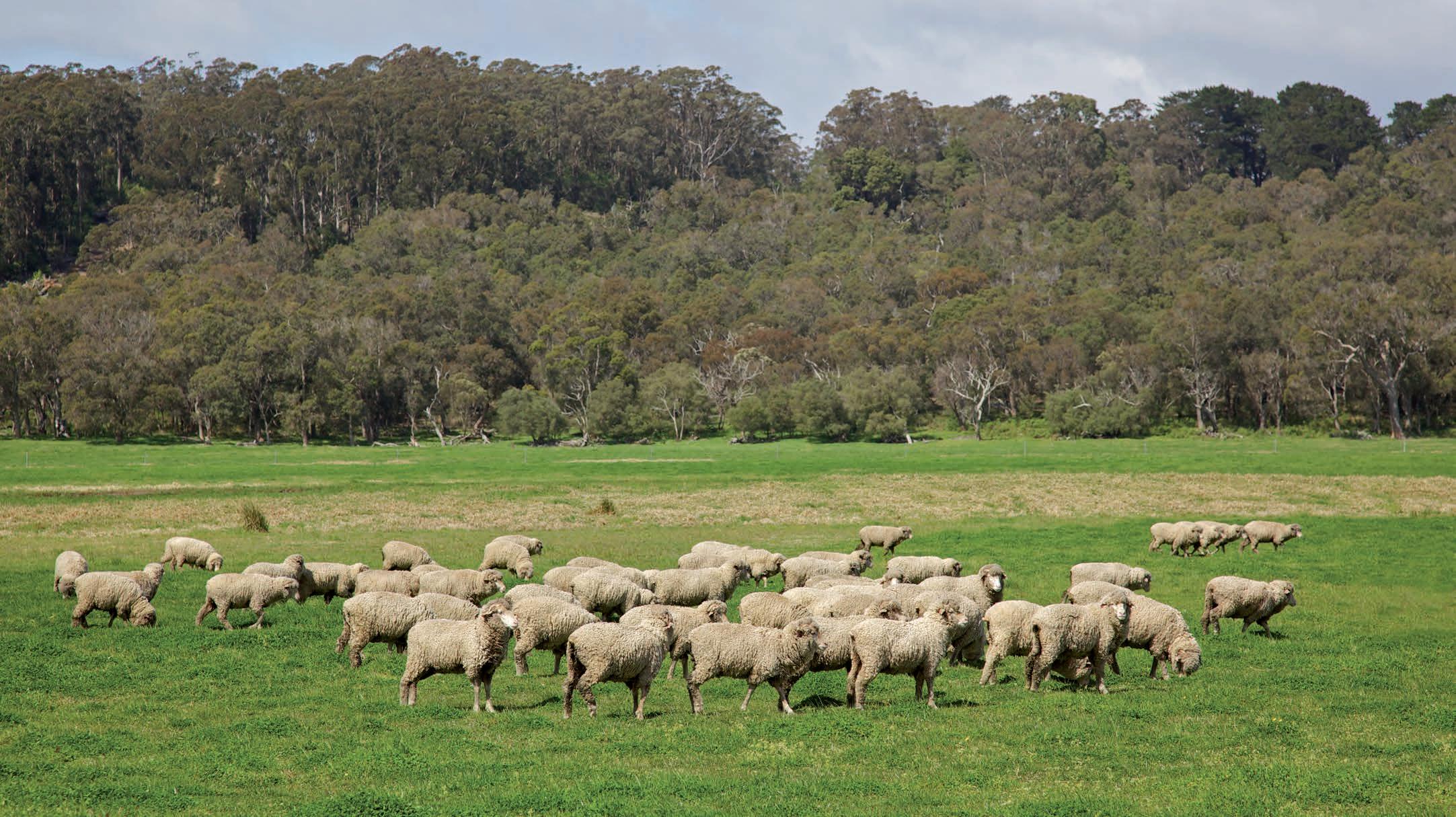
The purpose of the program is to trial and demonstrate how scaling of particular practices - or combinations of practices - can improve management of natural capital to build drought resilience. Through this, the program aims to create and communicate an evidence base and case studies that contribute to scaling out the successful practices.
The intended program outcomes are:
• Increasing the number of land managers trialling and adopting drought resilient land management practices – both directly through project activities, and by providing case studies and evidence that can support the “scaling out” of effective practices.

• Strengthening collabo-
rative networks between farmers and other land managers in support of increased adoption of drought resilient land management practices.
• Demonstrating the effectiveness of particular land management practices, and combinations of practices, in improving drought resilience. MFS are continuing a pasture trial sown by CSIRO in 2019 and a

lucerne variety trial sown in 2021 which will provide a six-year set, through both drought and flood years, showcasing the best species in terms of persistence, winter and summer production, feed quality and resilience in our pasture systems across the Monaro.
The trial sites are west of Bombala and Springfield Road, Nimmitabel.
The lucerne trial site was planted in September 2021 by S&W Seed Company to evaluate both existing commercial lucerne varieties, as well as new breeding lines from S&W’s Australian lucerne breeding program that have the potential to become commercial in a few years.
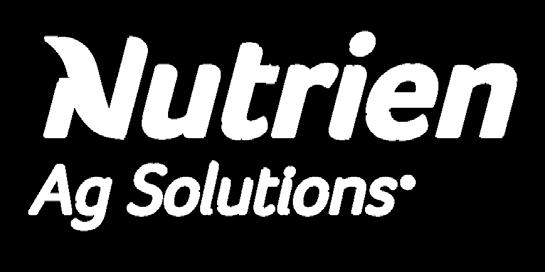
The aim of the trial site is to provide credible data and information on the

lucerne varieties in the trial over a four-to-sixyear period, including differences in winter activity between varieties and sowing rates.
Hugh Graham, Territory Manager for Southern NSW, S&W Seed Company said they are pleased to be able to partner with the MFS to make projects such as this available to all growers in the Monaro region.

The same trial site is also providing data for the ‘Resilient Pastures Project’, funded by the Australian Government’s Future Drought Fund, which is looking to explore what degree of winter dormancy in a lucerne variety best suits the unique climate of the Monaro (i.e., cool winters and significant summer rainfall), to achieve herbage production during key feed gaps (winter) that is balanced with long term persistence.
Lucerne varieties are very productive, particularly in response to summer rainfall, and are a key component of many perennial pastures on the Monaro but in some cases may not adequately address the need for forage during the winter feed-gap.
Data collected from this trial will help address our challenge which is how to best manage lucerne growth profiles to conserve soil moisture at strategic times of the year so production can meet feed demand at critical times of the season.
Government reminded one size does not fit all
FARMERS have urged the federal government to work with the industry to avoid unintended impacts on the fresh food supply chain.
Federal Employment
Minister Tony Burke last week announced proposed new laws to require casual workers with regular and predictable hours to be made permanent, but NSW Farmers workplace relations spokesman Chris Stillard warned it would simply make it harder to employ casuals with no real benefits.
Casual employees
already had a pathway to request permanent employment, he said, and had been no increase in the employment of casuals over the past decade.
“In agriculture there are plenty of seasonal jobs that are available on full time hours, but they are only available for part of the year or relatively short periods of time over the year,” Mr Stillard said.
“There’s also a high chance of disruptions to the work available, whether they be weather related or market related.

“Businesses need
certainty to be able to engage staff accordingly to meet these fluctuating demands, and while we understand what the Minister is getting at, the proposed changes raises more questions than it answers.”
For Mr Stillard, a horticulture grower in Southern NSW, there were long periods where few workers were required, and short periods where more were required. He said any broad changes to employment law without properly consulting the industry or observing the
feedback provided by the industry could have an impact on further driving up food production costs.
“Take the example of pruning, it runs for three months, three days a week, then it ends. Three months later thinning (removing excess fruit) begins and it runs for one month, four days a week and then it ends. A month later harvest begins – six days a week for two months and then it ends. Pruning recommences three months later,” Mr Stillard said.
“No business can
afford to have workers sitting around waiting for something to happen, and that’s before you factor in a hailstorm that might destroy that year’s crop, or a flood, or you get delays due to cold, or if fruit bats come and threaten your crops you might need to do two fifteen hour days to strip trees rather than eight six hour days to pickto-size.
“This is the reality of horticulture, but there are similar challenges for other types of agriculture, you can’t just have a ‘one size fits all’ approach
because we’re all different.
“The crazy part is that casual employees who have worked regularly and systematically over an extended period already have a protected pathway to request to be converted into permanent employees. Our preference is to keep the current definition and option to request conversion, as it provides certainty to all parties and offers casual employees the option to pursue conversion through a request mechanism.”
Wednesday August 2, 2023 Snowy Monaro Farmer - Page 8 The First Ever Oral Lice Treatment For Sheep Has Arrived. NUTRIEN AG SOLUTIONS COOMA NutrienAgSolutions.com.au Tony Clarke - Merchandise - 0408 114 812
PASTURE TRIALS: MFS is continuing pasture and lucerne trials near Bombala and Nimmitabel. Doug Alcock, pictured, assisting with the trials.










 By LISA ASHURST
By LISA ASHURST


































